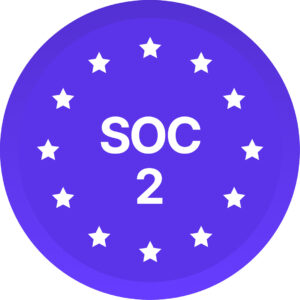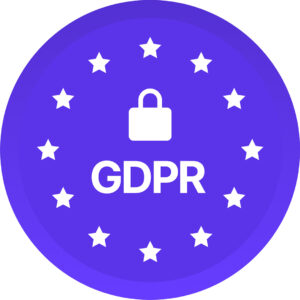In the first part of this series, we explored why real-time engagement data matters and how it gives leaders the visibility they need to act before issues escalate. But knowing how people feel is just the start.
To create meaningful change, organizations have to close the loop: taking what they learn and turning it into development that helps employees thrive. This means reimagining how we collect, analyze, and act on feedback not as a one-off check-in, but as a continuous learning engine.
Here’s how organizations can integrate engagement and learning in a way that’s honest, strategic, and human-centered:
Phase 1: Smart, ethical data collection
Before you act, you have to listen, and listen well.
- Go deeper than satisfaction: Don’t just ask “Are you happy?” Instead, measure things that really drive growth: connection, purpose, manager support, psychological safety, and alignment with values.
- Example: Replace generic Are you satisfied at work? With:
- “I feel a sense of belonging on my team.”
- “My manager supports my development.”
- “I understand how my work connects to the company’s purpose.”
- Example: Replace generic Are you satisfied at work? With:
- Keep it voluntary
Employees should never feel forced to share. Opt-in participation builds trust and better data.- Example: An organization introduces a quarterly pulse survey and communicates clearly that participation is optional. They also provide anonymous feedback channels and let employees know their responses are aggregated, not identifiable
- Be radically transparent
Tell people what you’re collecting, why it matters, and how you’ll use it. When employees understand the impact of their feedback, they’re more likely to engage meaningfully.- Example: Before launching a survey, HR holds a live Q&A to explain the goals of engagement data collection and what actions will follow. They send a follow-up email with a one-pager outlining what questions are asked, how data is stored, and who will have access
Phase 2: Insight generation & analysis
Once you’ve gathered the right signals, it’s time to make sense of them.
- Spot the patterns that matter
Use tools like dashboards and machine learning to see what’s shifting across time, departments, or identity groups.- Example:A tech company sees rising disengagement in their customer success team over the past 3 quarters. The data shows a consistent theme: lack of recognition and unclear performance expectations.
- Ask “why,” not just “what”
If turnover is spiking on one team, don’t stop at the number. What’s driving it? Lack of support? Poor communication? Burnout?- Example: The same company interviews a sample of team members and finds out the issue isn’t just about performance reviews but rather about unclear role definitions after a reorg. This insight shapes the next step: clarifying roles and resetting expectations.
- Translate insights into action
Build simple, role-specific insights for managers and HR—like “employees on your team are asking for clearer growth paths” or “new hires feel uncertain about their purpose.” - Example: HR sends monthly pulse summaries to department leads, including 2–3 priority insights (e.g., “Your team scored lowest on clarity of growth opportunities”) and suggests actions (e.g., “Run a 30-minute team session to share career pathing tools”).
Phase 3: Learning-driven interventions
This is where change starts to take root.
- Design learning that fits the need
Instead of generic training, offer skill-building tied to what employees are actually struggling with, like giving feedback, navigating remote work, or building trust.- Example: If feedback shows that mid-level managers struggle with giving feedback, the L&D team launches a 2-week microlearning series on coaching and performance conversations specifically for people managers.
- Show people where they can go
Create clear internal mobility paths. Help employees see how their strengths can grow into new roles.- Example: A retail company builds a career pathing tool that shows employees how they can move from frontline to HQ roles, including training requirements, mentorship connections, and success stories from people who’ve made the leap
- Connect learning to strategy
If your business is focused on innovation, upskill around creativity. If collaboration is a priority, train for cross-functional teaming. Engagement and business goals should move in sync.- Example: A financial services firm wants to improve cross-functional collaboration. When feedback confirms that siloed teams feel disconnected, L&D builds a new onboarding module that includes rotational learning and job shadowing across departments.
What success looks like
Organizations that integrate engagement and learning build happier teams and get measurable results:
- 35% increase in retention due to employees feeling valued and supported
- 27% productivity boost as engagement drives better collaboration and performance
- 40% reduction in internal mobility friction, as people have clearer pathways to grow
These aren’t just HR wins, they’re bottom-line business results.
What makes it stick? Leadership.
The best data and tools mean nothing without committed leadership. Creating a feedback-to-growth culture takes more than HR. It takes leaders who are curious, accountable, and people-first.
Key shifts include:
- Investing in people analytics and enabling tools
- Creating cross-functional teams (HR, L&D, DEI, and business leads)
- Measuring success beyond engagement, like team performance and innovation
- Treating feedback as a tool for learning, not a critique to be defended
Trust is the foundation
At the heart of this entire strategy is trust. Without it, even the most sophisticated platform will fall flat.
- Be open about how data is collected and used
- Protect employee privacy at every step
- Ensure participation is always voluntary
- Keep the conversation going
When people trust the process, they engage more deeply. And when they engage, they grow.
The future of work is feedback-driven
The best organizations aren’t just measuring engagement, they’re listening deeply, learning continuously, and acting with purpose. They know that every piece of feedback is more than data. It’s a chance to grow, adapt, and do better.
When companies treat engagement as the start of a conversation, they create space for people to thrive. They turn insights into learning. Feedback into action. And employees into leaders.
Because in the end, it’s not just about building inclusive, innovative, high-performing workplaces. It’s about building workplaces where people feel seen, supported, and set up to succeed.
That’s the future of work.

